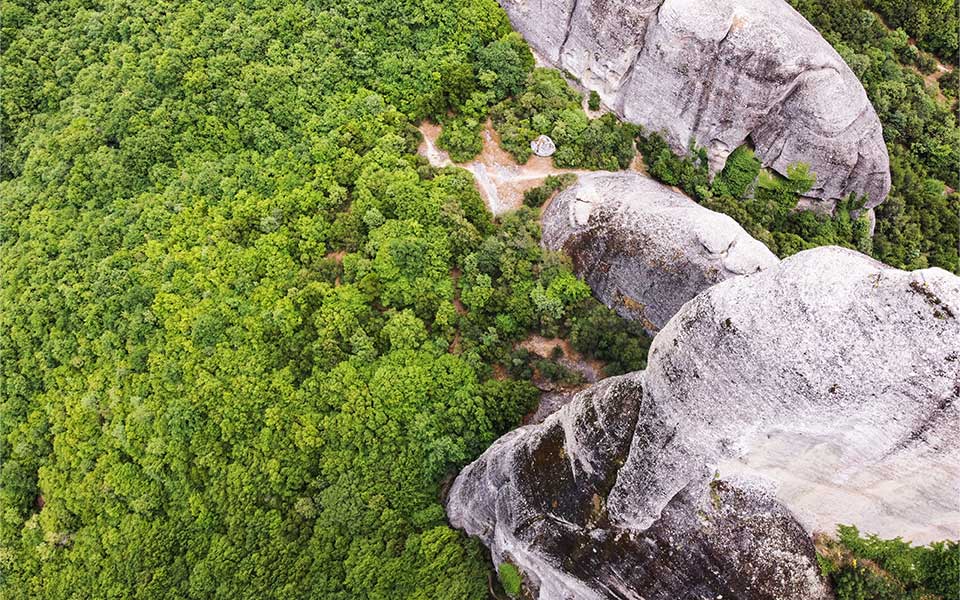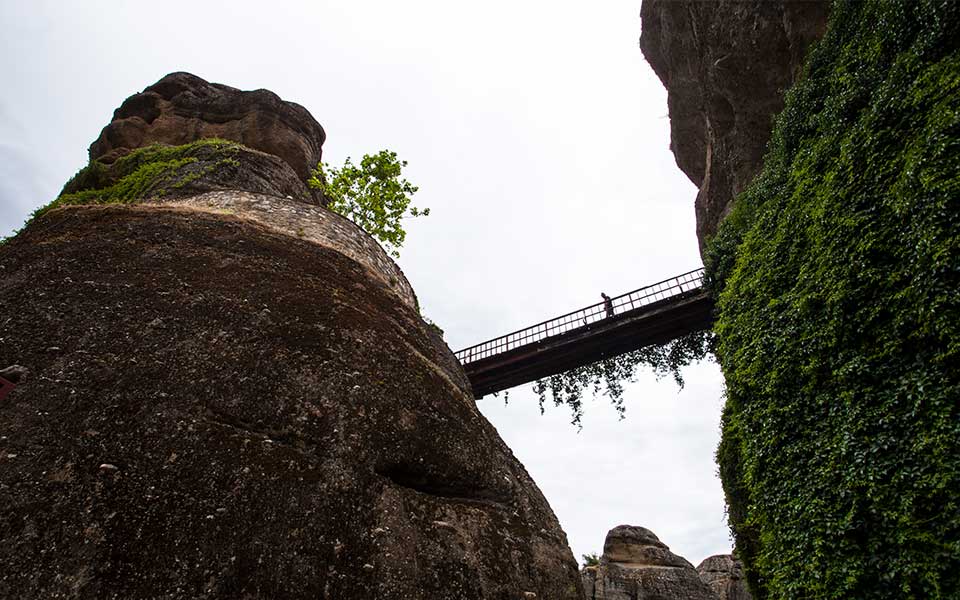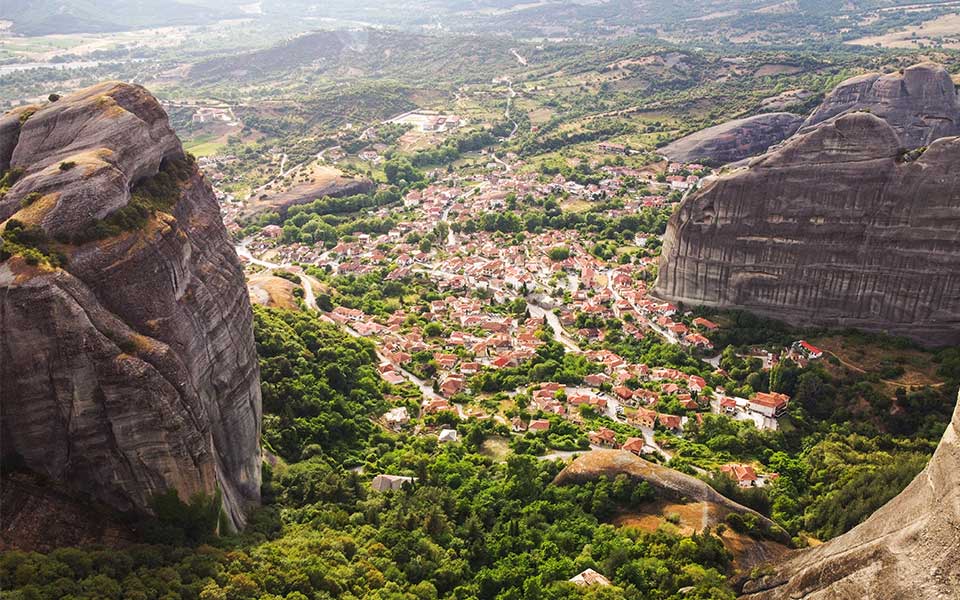One thing is certain for the traveler who leaves the azure beaches of the Aegean and Ionian seas, as well as the coastal gems of mainland Greece, in search of Meteora in the northwestern corner of the Thessalian Plain: they will be rewarded with an abundance of wonderful experiences. Approaching Kalambaka, the administrative center of the region, and gazing at the panorama that unfolds behind it, one is left in awe. The sight of massive rock pillars standing side by side evokes an almost ecstatic response. It becomes immediately clear that they are witnessing a unique geological phenomenon, prompting a natural desire to find out more information about it.
From this large monolith cluster, about 20 colossal pillars stand out, each with an average height of 313 meters and a width of around 200 meters. Their surfaces are smooth, as if polished by giant human hands. These formations originated between 23 and 33 million years ago from river sediments that flowed into the area, and 95% of their composition is made up of grayish-brown sandstone. Through the interaction of extreme natural phenomena, they became compact, smooth, sturdy, and unexpectedly beautiful. However, they also became inaccessible and inhospitable, the sheer, vertical surfaces making it impossible for humans to climb, let alone establish themselves on the narrow, barren, and waterless upper surfaces.

© Olga Charami
Yet, they did not prove inaccessible to all. From the 10th century AD, ascetic monks began to conquer these towering rock formations. Arriving individually at first and later in organized groups, they established everything from simple cells to modest monasteries with great difficulty, seeking seclusion and a spiritual connection with the divine – suspended between Heaven and Earth. In their efforts to overcome the challenges of this undertaking, they used ladders, ropes, pulleys, baskets, and even nets to carry people, food, water, and all sorts of materials.
Their determination paid off: over the centuries, approximately 23 monasteries were founded, six of which remain active today: the Monastery of the Transfiguration (also known as Great Meteoron), Varlaam, St. Nicholas Anapafsas, the Holy Trinity, Rousanou, and St. Stephen. Of the six, the first four are male monasteries, and the latter two are convents; all are accessible and open to visitors. Since the late 1920s, stairways and small connecting bridges have been carved or built into the rocks, making for a demanding but ultimately rewarding ascent.

© Olga Charami
For the traveler who has made it this far, a visit to the Meteora monasteries is essential – not just to witness this rare geological phenomenon but also to observe the second-largest monastic community in Greece, after Mount Athos. Visitors will have the chance to marvel at remarkable examples of unique architecture atop the rocks, admire exquisite frescoes and icons in the beautiful churches, explore exhibitions and museum spaces filled with relics and artworks, and immerse themselves in this important center of Eastern Orthodox Christianity. Furthermore, unlike Mount Athos, where women are not allowed, Meteora welcomes female visitors, offering a unique spiritual experience. Finally, being able to take photographs of the stunning surrounding landscape from the breathtaking heights of the cliffs provides a unique opportunity to create unforgettable memories.
Because of the unique geological phenomenon and the special religious significance of the region, Meteora has been designated as a UNESCO World Heritage Site. Moreover, the entire area surrounding the rock formations, with its hills and undulating plains, has been included in the NATURA 2000 program as a natural habitat. As a result, this is a fantastic location for hiking, cycling, relaxing, and exploration. The journey can even include a visit to the prehistoric cave of Theopetra, south of Kalambaka, which dates back more than 60 million years – older than the geological structures of Meteora themselves. The cave, approximately 500 square meters in size, is particularly noteworthy since it has been shown to have been inhabited continuously by humans from 130,000 years to about 3,000 years ago, spanning the Paleolithic, Mesolithic, and Neolithic periods.

© Olga Charami
It is also worth noting that, despite its uniqueness, the majestic Meteora receives no mention in either ancient Greek literature or mythology.
Finally, the picturesque village of Kastraki, nestled at the foot of the rocks, is a must-visit. It offers hotels, guest rooms, and delicious local cuisine. Meteora has become a major tourist destination in mainland Greece, attracting 2.5 million visitors each year. The Kalambaka area offers approximately 7,000 hotel beds and 800 rental rooms. Regardless of nationality, travelers will never feel lonely here. Foreign visitors come from a variety of nations, including the United States, Europe, China, and Japan, as well as the Orthodox countries of the Balkans (Serbia, Romania, Bulgaria). However, as of 2024, ongoing conflicts have led to a significant decrease in the number of Orthodox Russian and Ukrainian visitors, as well as visitors from Israel. Nonetheless, better days surely lie ahead for the magnificent Meteora.












